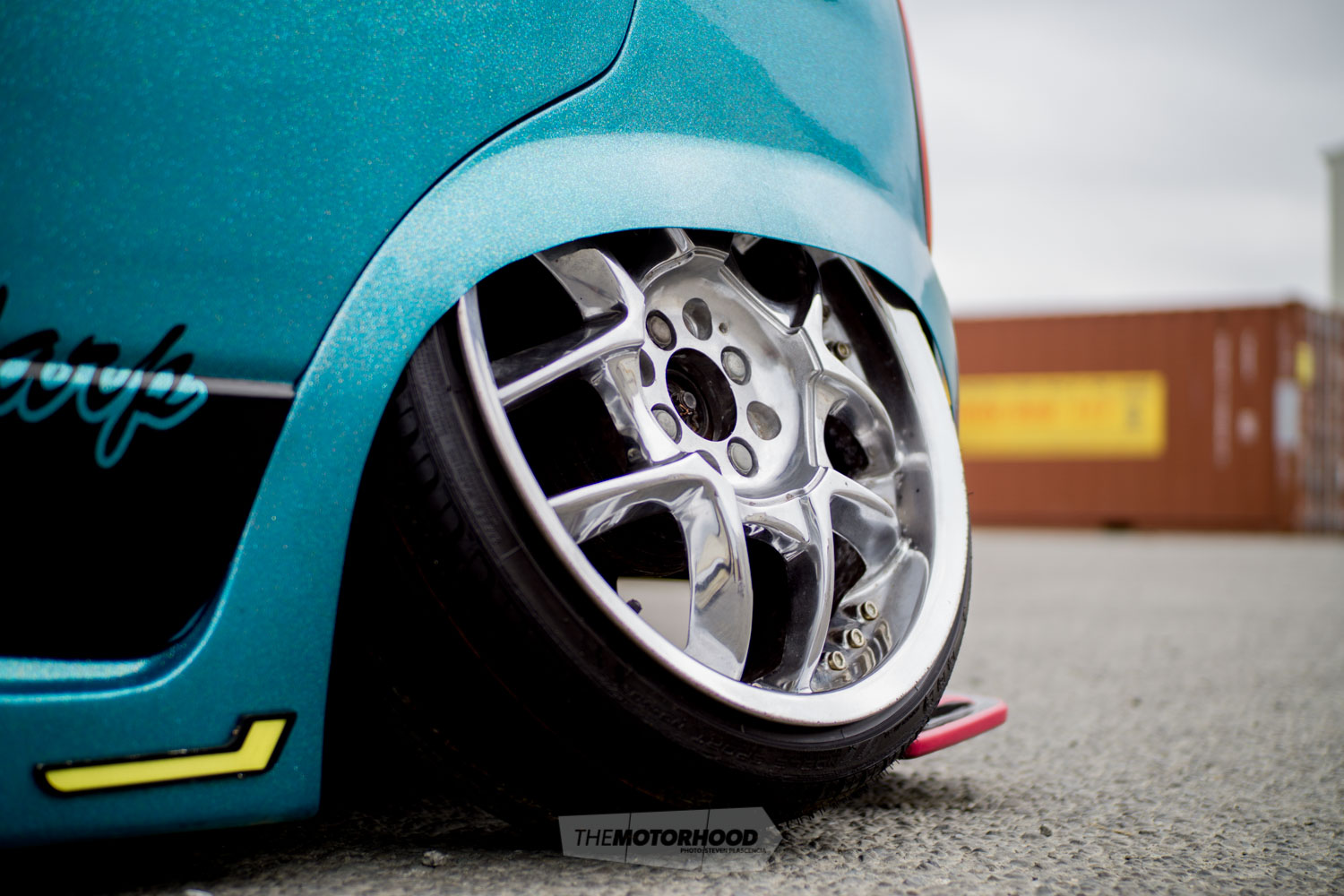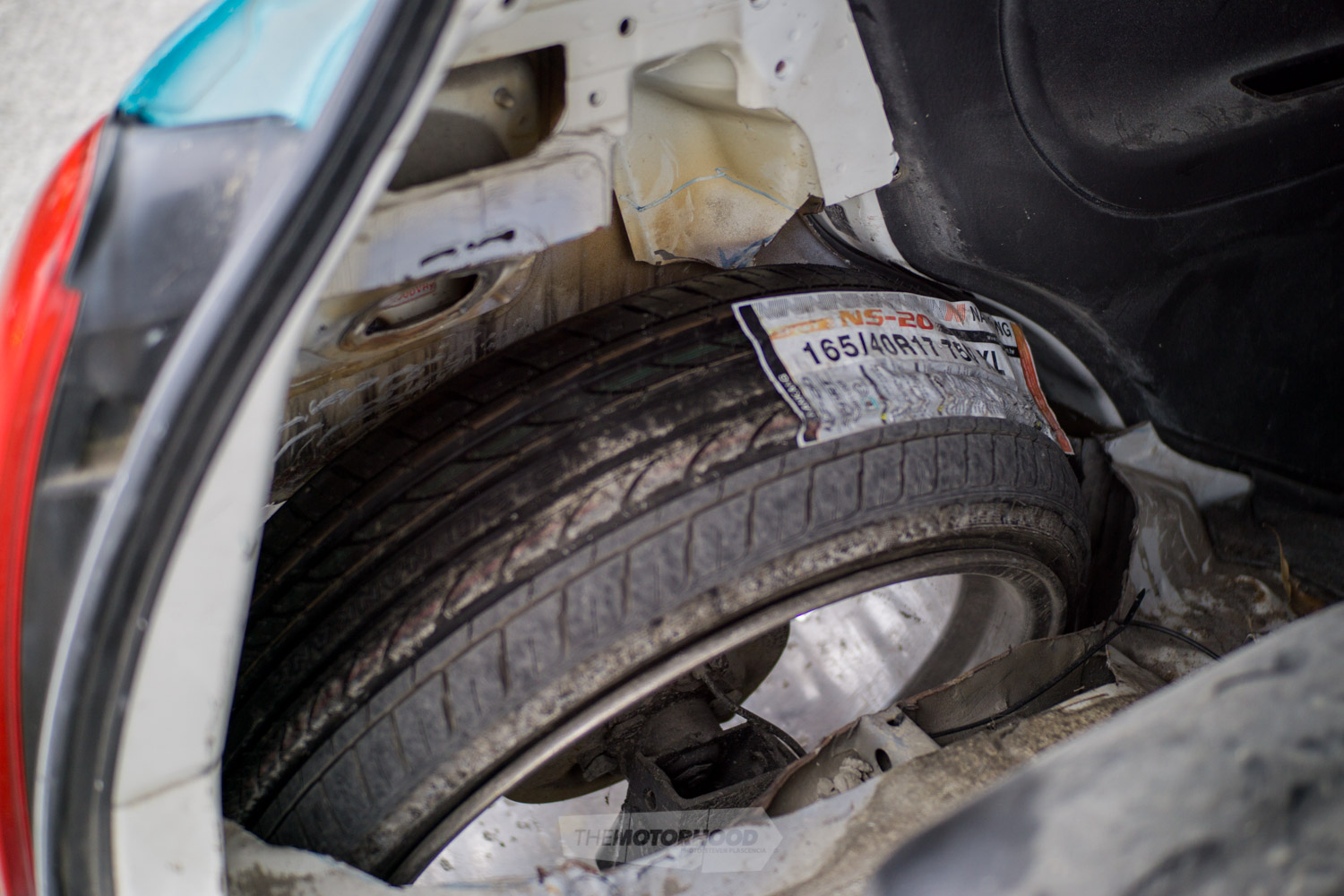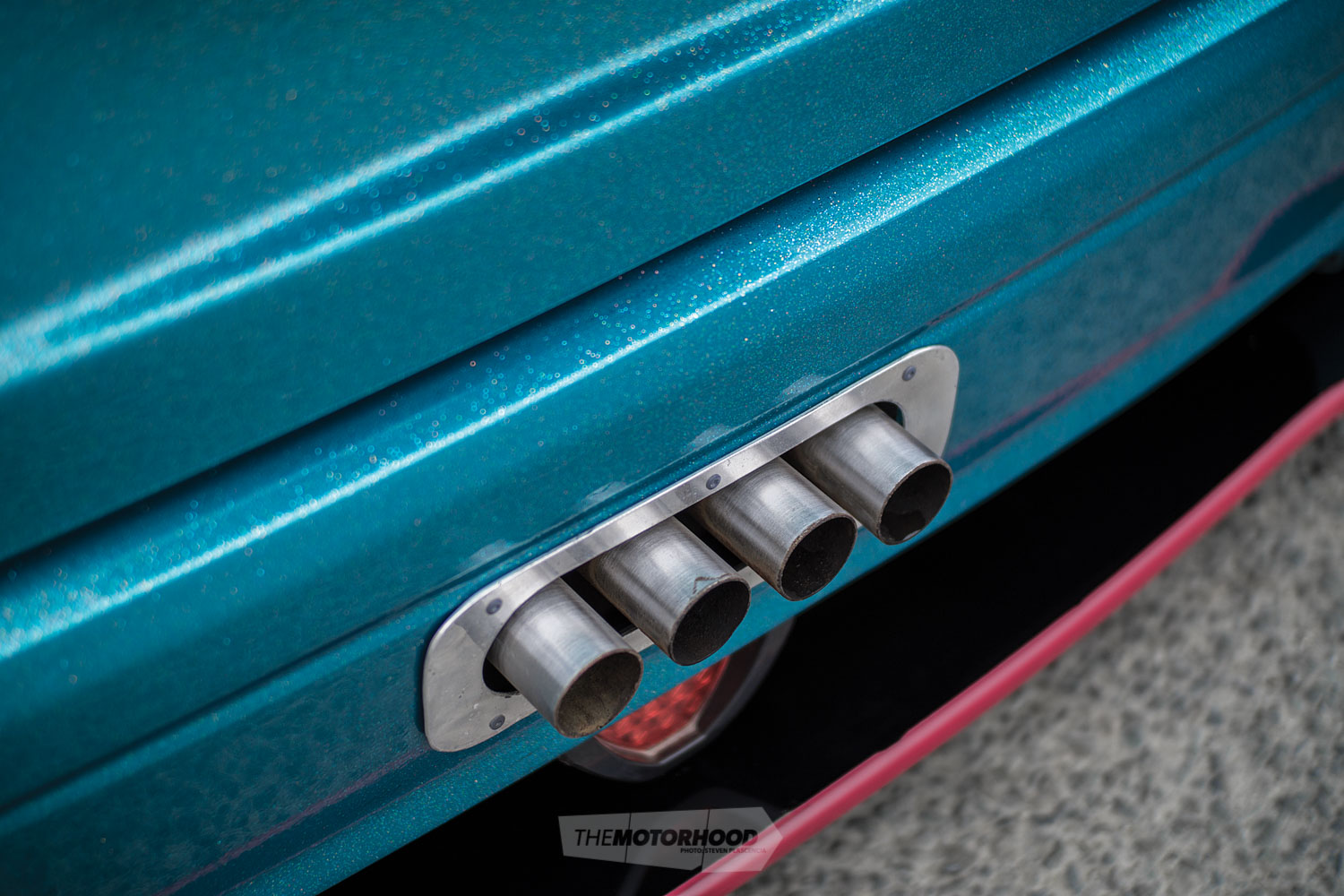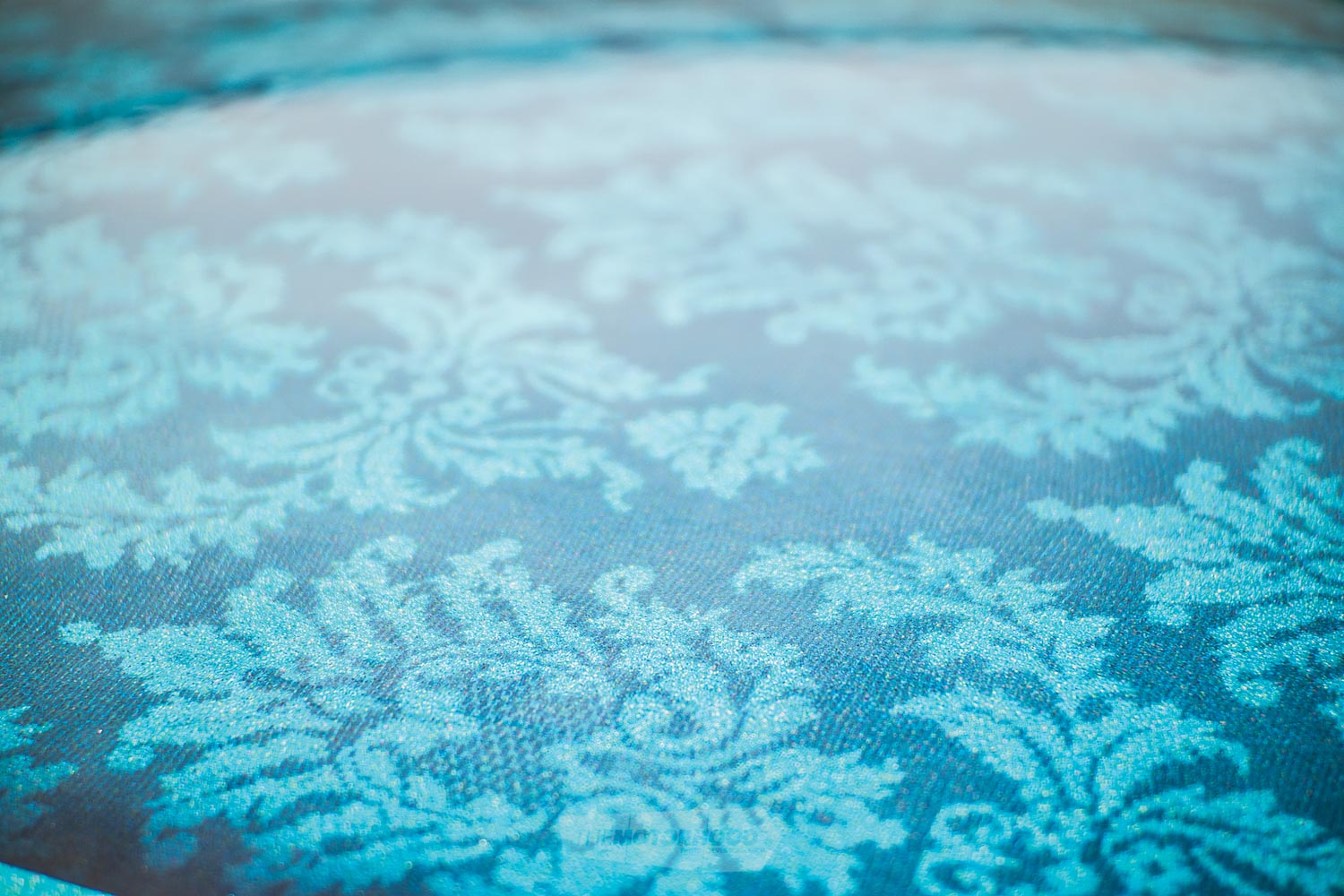It’s a style rarely seen outside of Japan, and, for that, it’s often misunderstood, but, just like those in the Motherland, Thomas Gordon’s Mira was built for nothing but fun
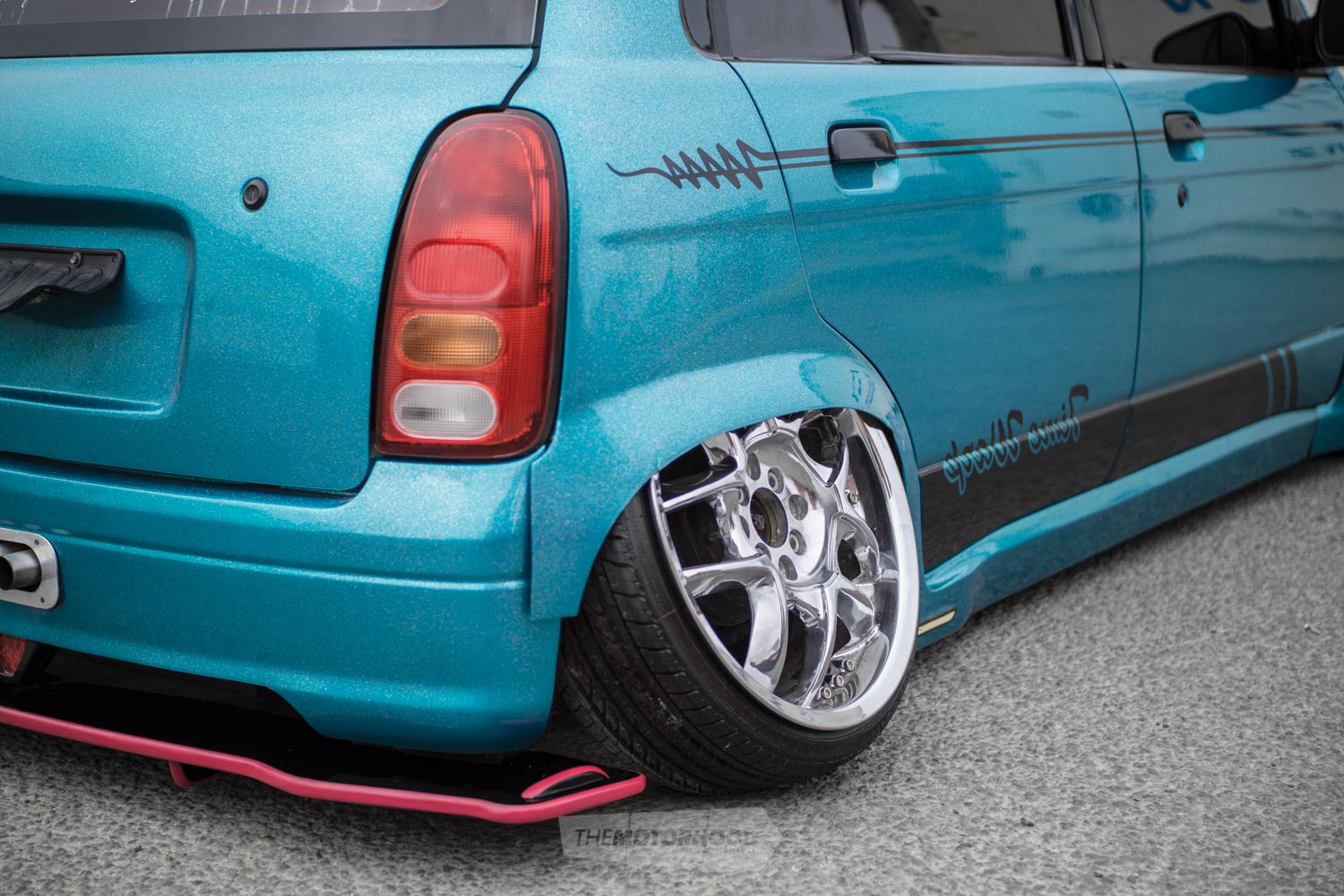
While most of us will happily admit that we look to the Japanese for automotive inspiration, there are some far reaches of Japanese car culture that the Western world dares not touch. Perhaps it’s for a lack of understanding them, but the truth about these ‘fringe’ subcultures, like the bippu-styled kei cars, is that they’re all about having fun. These tiny and completely impractical machines are never intended to be functional; they are devoted to the absurd, built to shock and wow bystanders, and perhaps this is where the disconnect with the Western world lies — we often take what we do too seriously!
But cast your mind back to NZPC Issue No. 225 and the Tamiya GX81 of Christchurch automotive-artist Thomas Gordon, and you’ll instantly understand this is one Westerner who gets it. Having spent his fair share of time immersed in the Japanese scene, he’s long been a small-car aficionado, having daily driven a Mira for two years around the 04 calling-code area, in which time the influences of well-known Japanese cars — including Nozomu Yamamoto’s ridiculously slammed OG Mira — started weighing in on his subconscious. It wasn’t long after that he found himself exchanging centre-console change for another body with a blown motor, and even less for a donor car to provide the new heart.
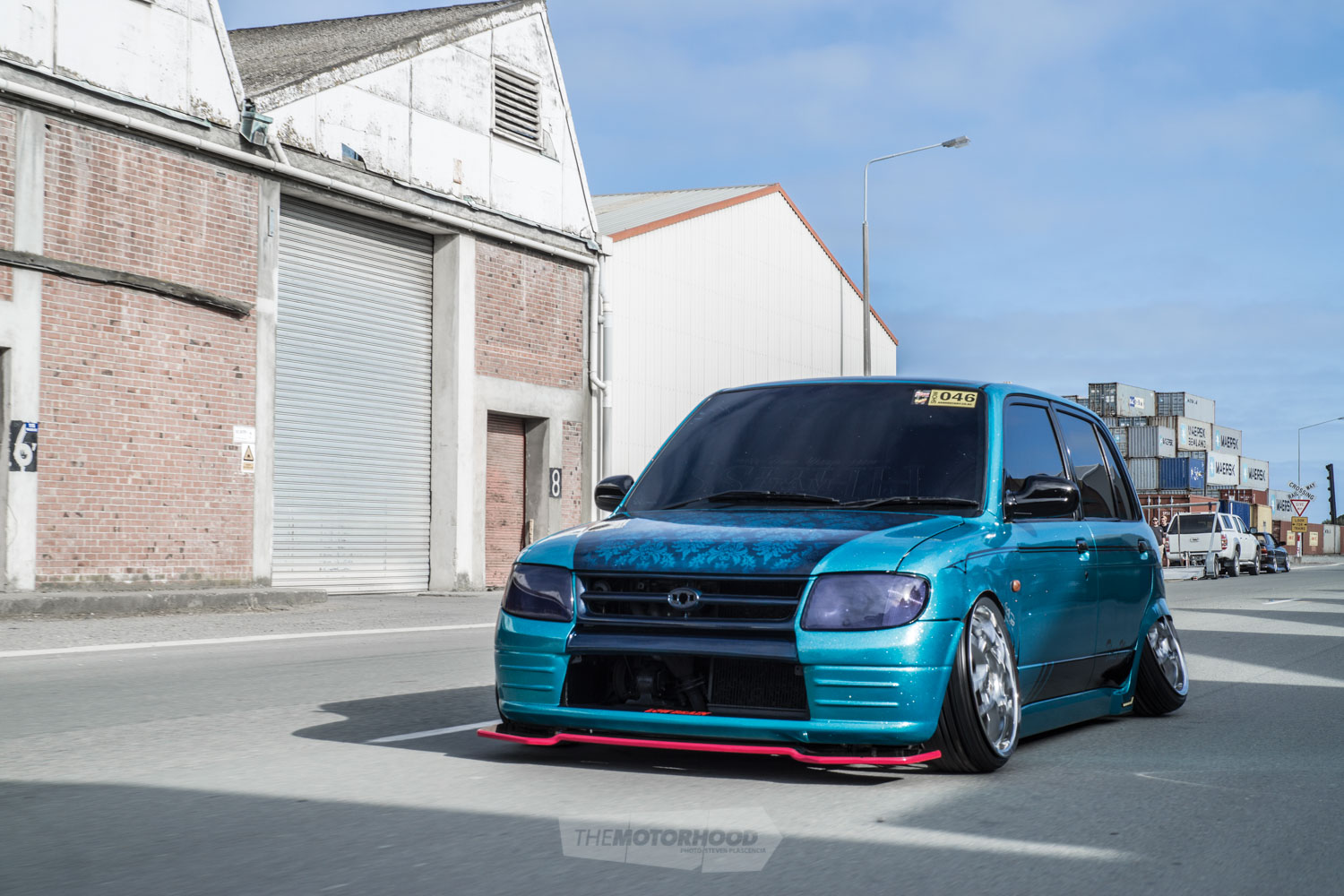
The three-cylinder one-litre motor was switched in from the donor while Thomas was one arm down after having broken it a few weeks prior — no doubt the engine was light enough for him to get the task done regardless
“I just wanted to make a fun car. This one had no WOF, and, to build it to the style I wanted properly, meant [that] it will never pass a cert or anything like that ever again,” says Thomas.
“That’s why I chose not to spend massive money on unnecessary mechanical work just so the car could be parked up for the rest of its life. It’s all about the authentic style.”
Thomas tells us that, all-in-all, it took roughly seven months of going hard every night working on it: “I got real carried away … it was meant to just be plain white with wee 14-inch wheels on it and real slammed. I bought tyres to suit the 14s, but they looked shit, so I bailed on those and went to the 17s because I really wanted to run the Nangkang NS2 165s … they cost more than the whole car and fit like god damn rubber bands.”
That’s when the ideas really started pouring out, and it was either commit in full or call it quits. We think you can guess what route he went down …
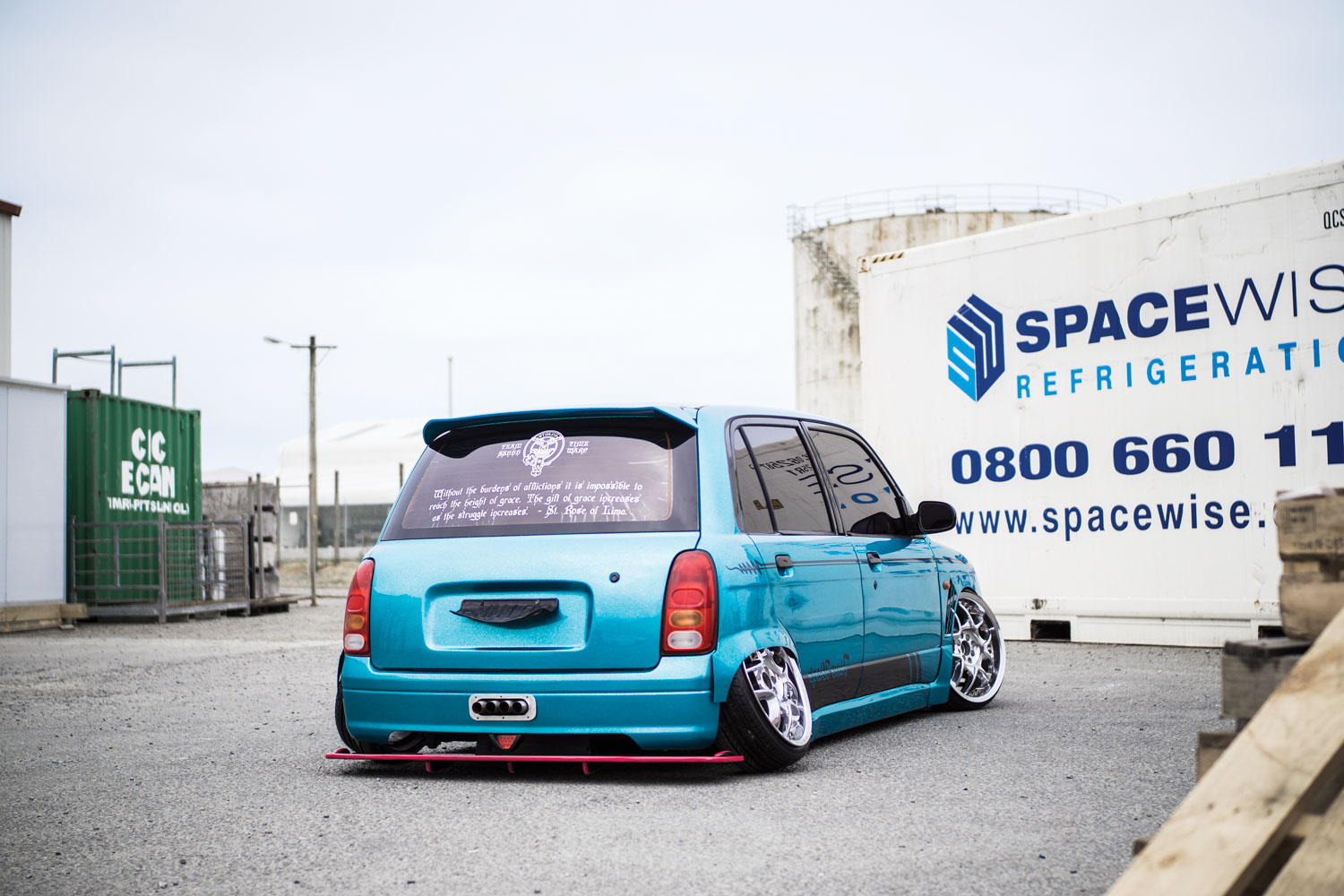
Thomas proudly admits that he took care of all the “sketchy” fabrication work, chopping up the hubs and raising the strut towers for ultimate low, along with lopping off a good chunk of the chassis rails for wheel clearance and deleting the tubs so that those cambered-out rears had somewhere to go. It may flick all kinds of road grime around inside the ‘boot’, and the bump stops have been replaced by the door inners, thanks to the fact that there’s a good 100mm of steel missing back there, but it’s all these hard and fast modifications that have made the charm of this little scrapper possible — without them, it wouldn’t be nearly as cool.
The real style, though, is delivered by way of what you see on the outside. The front guards have been radiused to accept the 17-inch wheels and vented, while the bumper mimics Lexus styling, and the splitter is a one-off piece. Likewise, down back, you’ll find custom steel side skirts, a modified Honda Jazz roof spoiler, and another one-off splitter. Thomas managed to con good friend Nick Gantley — a panel beater and painter by trade — into ensuring not only that all of his custom touches gelled, but also, most important, into applying the beyond-crazy award-worthy paintwork — a task he was all too happy to complete, as it’s not something you’re often asked to do in a regular work week. Over the course of a weekend, the paint was laid down 17-layers deep. Yep, that’s not a typo: 17 layers.
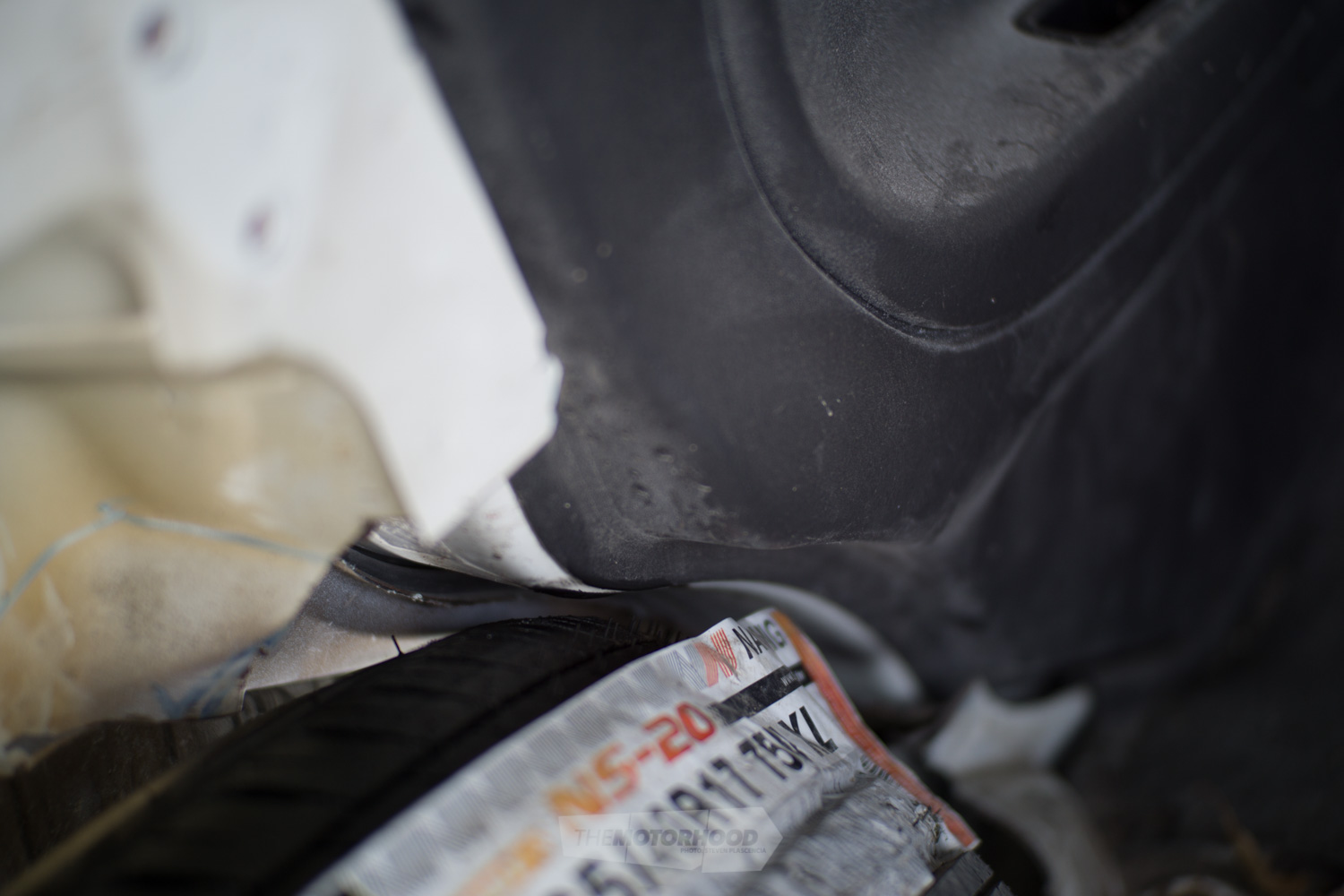
“I wanted to make the car able to drive around a car park, so it can still work, but doesn’t have to be legal in any way. Every single aspect in that corner was cut … literally”
Consisting of a turquoise base coat with a mix of custom metalflake and micro flakes, it took roughly 20 hours of cranking flat out to get it done. Nick would lay down four layers of clear before the guys worked furiously to sand it back, hit it with four more layers, and then it’d be sanded again — this process was repeated until it reached the finish it wears now, one that wouldn’t normally see you get any change back from 10 large. “Everyone was going hard the whole time. We were going through boxes and boxes of sanding discs to flow-coat it, something real dumb like a disc every five minutes. At one point, we had four guys on the sanders going over the car to smooth out the flake, which felt like 40-grit sandpaper at the start and would have cut you if you ran your hand over it,” Thomas recalls.
The result is something that is about as authentic as you’ll find outside the car shows of Japan. So, while Thomas openly admits that the Mira hops around something crazy and feels sketchy to drive even the shortest of car-park distances, that’s all part and parcel of running such wild oni-kyan (demon camber). Maybe we could all learn a thing or two from Thomas — that not taking what we do so damn seriously can result in something well worth the pages of this magazine.
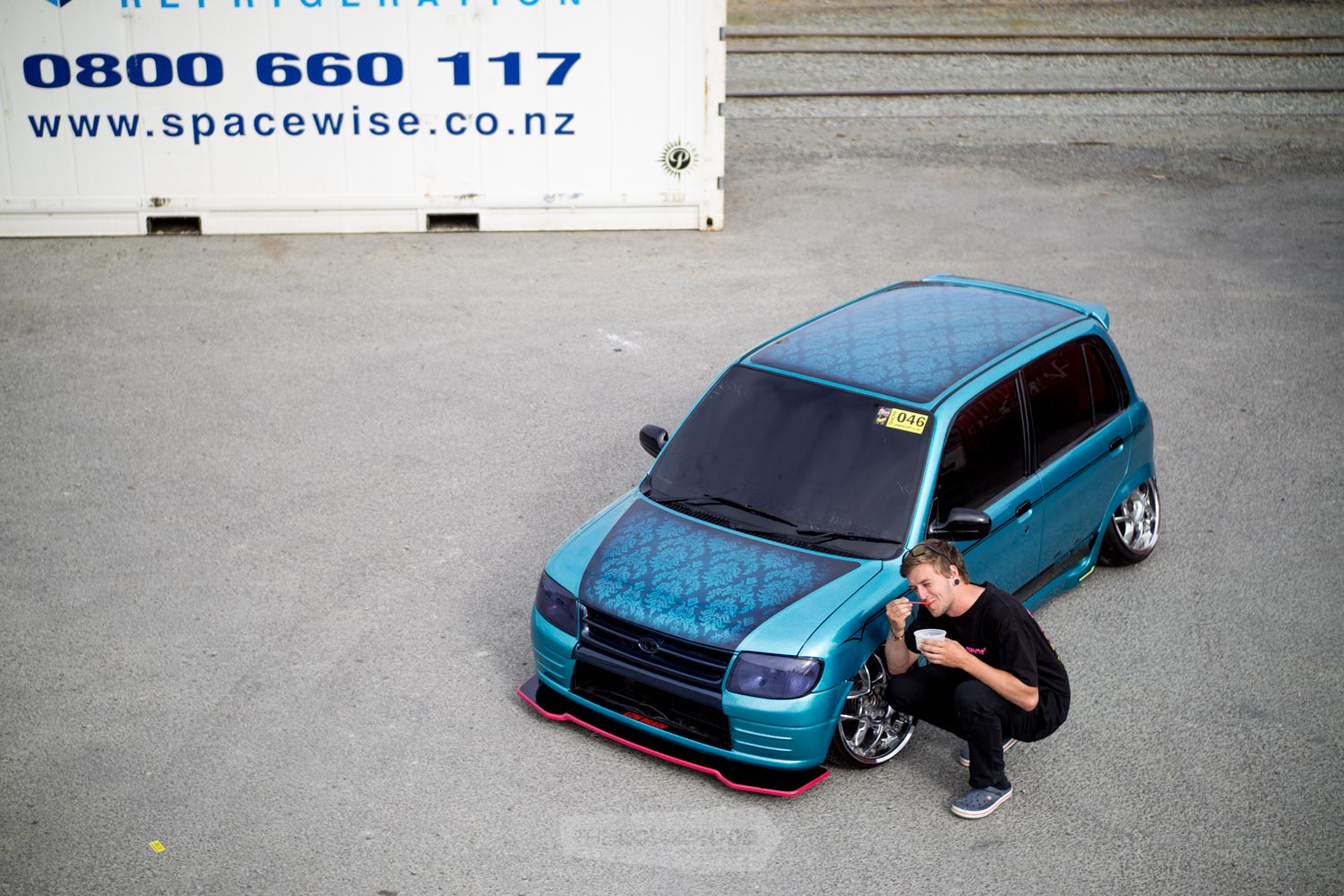
Thomas Gordon
AGE: 24
LOCATION: Christchurch
OCCUPATION: Landscaper
BUILD TIME: Seven-ish months
LENGTH OF OWNERSHIP: Two years
THANKS: Just the usual … my partner, Kate, for not complaining about the dumb cars I build; my parents, for shed space; and all the boooiiiiizzzzz, for hooking me up with all sorts of random help — mainly Nick Gantley, for helping me with wicked panel and paint and putting up with all my super-annoying requests
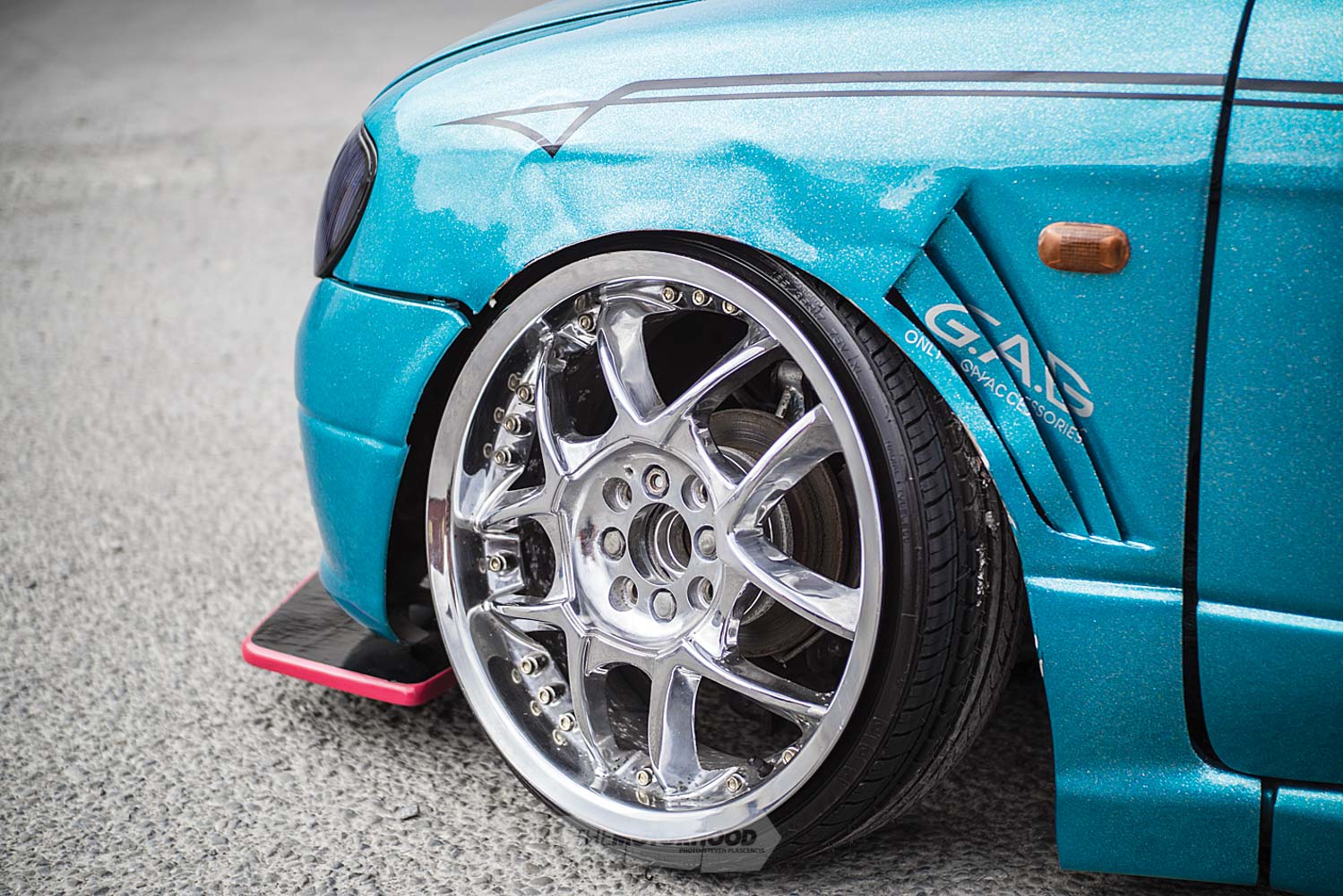
1998 Daihatsu Mira L700
Heart
ENGINE: EJ-DE, 1000cc, three-cylinder
BLOCK: Factory
HEAD: Factory
INTAKE: Factory
EXHAUST: Custom equal-length extractors, two-inch straight pipe, quad tips
FUEL: Factory
IGNITION: Factory
ECU: Factory
COOLING: Factory
EXTRA: Everything that got in the way cut out
Driveline
GEARBOX: Five-speed
CLUTCH: Factory
FLYWHEEL: Factory
DIFF: Factory
Support
STRUTS: (F) Modified Mazda2 RSR coilovers, (R) RSR springs with standard shocks
BRAKES: Factory
EXTRA: Relocated strut mounts, cut-and-shut front knuckles, modified front sway bar and tension rod, modified steering arms, custom 140mm rear drop spindle and trailing arms, front tubs removed, rear tubs removed
Exterior
PAINT: Turquoise base coat with custom metalflake and micro flakes, black candy lace roof and bonnet, 2K black window frames and mirrors
ENHANCEMENTS: Radiused and vented front guards; custom Lexus-style bumper; custom rear guards; custom steel side skirts; modified Honda Jazz roof spoiler; custom front and rear splitters; 2.5-per-cent window tints; 20-per-cent-tinted windscreen; pinstripe and graphics designed by Ash from Hero Prints, cut by Jonny at The Sign Lab, applied by Thomas
Interior
SEATS: Factory
STEERING WHEEL: Factory
INSTRUMENTATION: Factory
EXTRA: “Forget about the interior; there’s a goddamn petrol tank in the back seat”
Performance
POWER: “Must be around 50hp”
TORQUE: Nil
FUEL TYPE: Petrol
0–400m: “Once”
CIRCUIT TIMES: “Hahaha”
This article originally appeared in NZ Performance Car issue No. 254 — to get your grubby mitts on a copy, click the cover below:





